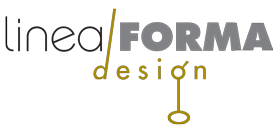When I started Linea Forma, I had just left Modern Mode, Inc., a high-end office furniture manufacturer in Oakland, CA, where I was head of design and custom products. I was interested in all things design, and ID Magazine was my favorite design reference. For insight into design theory, and what it meant to be a “real designer”, one of my biggest influences had to be Ralph Caplan, who wrote a column called “Circumstantial Evidence” in ID Magazine for many years.
An editorial of Ralph’s from 1990 had a permanent impact on me. I saved a copy and refer back to it on occasion. Here are a few of his finer points (my added emphasis):
“…being a client is a part-time activity…designers are full time. Clients are almost always moonlighting: they do something else in real life, and they may be clients only once…they are a client only in a design relationship. Ideally that would be a relationship between collaborating equals, and it sometimes is; but such a relationship is difficult to sustain when one of the collaborators has power of approval…the client’s role is temporary, but that does not mean it is passive.”
“When designers talk about ‘educating’ clients, they usually mean proving to them that design is important…education ought to involve introducing clients to the design process, not trying to make technical designers of them…they just need to know how the design process relates to their situation…designers can abstract their process enough to see how broadly it applies to the working methods of other disciplines.”
“The client-designer relationship is sometime compared to a patient-doctor relationship, and the two are analogous. The patient has to tell the doctor where it hurts. The client has to tell the designer what the problem is. In the process, both the patient and client may have to reveal what normally is no one else’s business.”
I always try to remember these three points when I’m beginning with a new client. Be a teacher, as it relates to design. A little hand-holding at the beginning goes a long way toward clear direction down the creative path. I explain my process, the achievable goals, and any restrictions. I listen to the client’s perspective, work through the design objectives with the client and then determine our path options to the final solution. Explaining the parts of the process that the client shouldn’t be expected to know is crucial. Being a good communicator, particularly knowing how to listen, I feel, has been an important element in developing long-term client relationships for me.
And finally, my favorite Ralphism, “…in my experience, designers are unique among professionals in that they almost invariably do more than clients ask, or expect them to do. And this ‘more’ is not self expression or cosmetology. It more commonly takes the form of being more responsive to the client’s objectives and the consumer’s needs.”
I can’t argue with him there. It’s just the way a designer sees the world. Not an easy thing to turn off. Living by design.
Share this:

